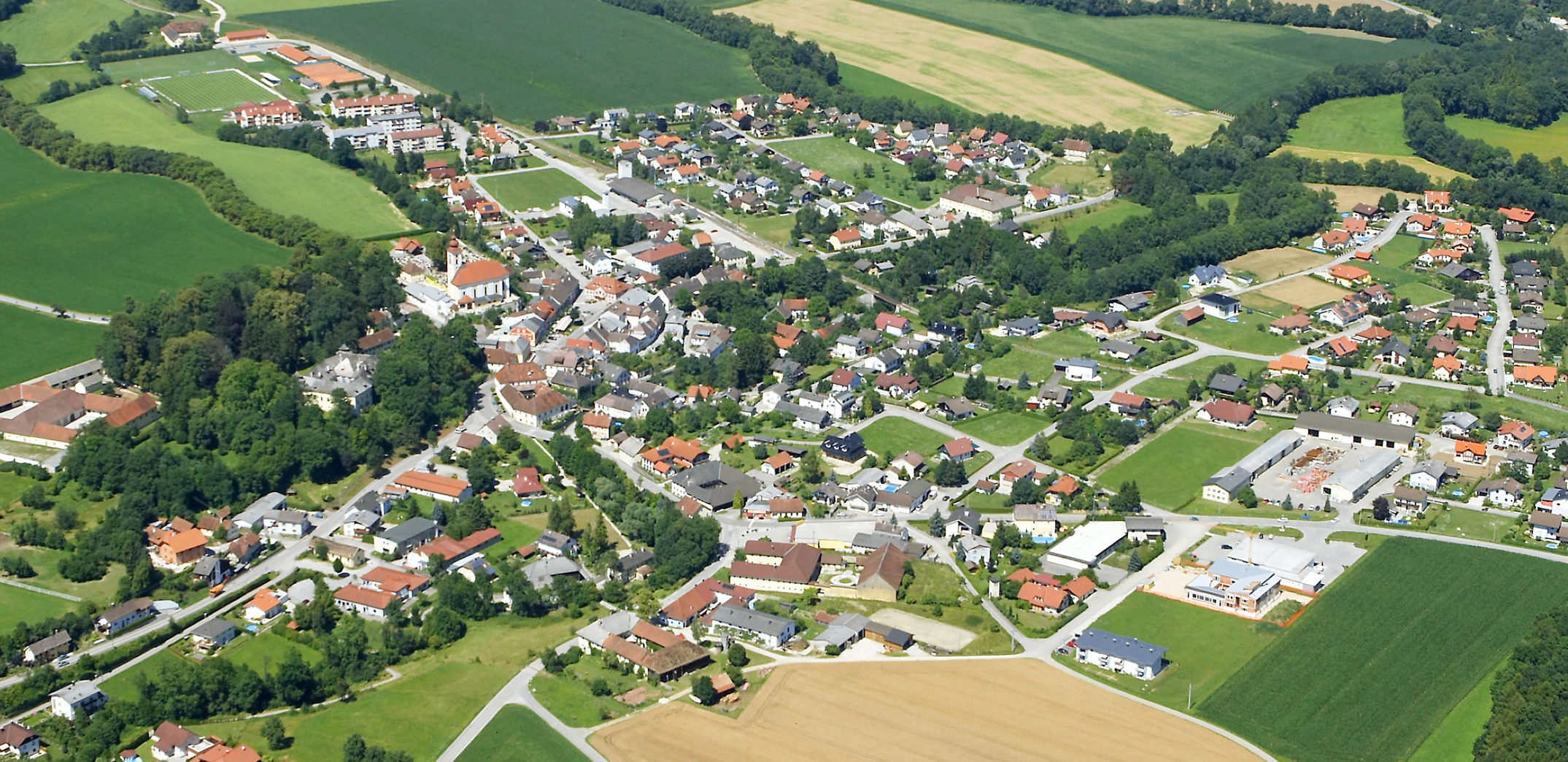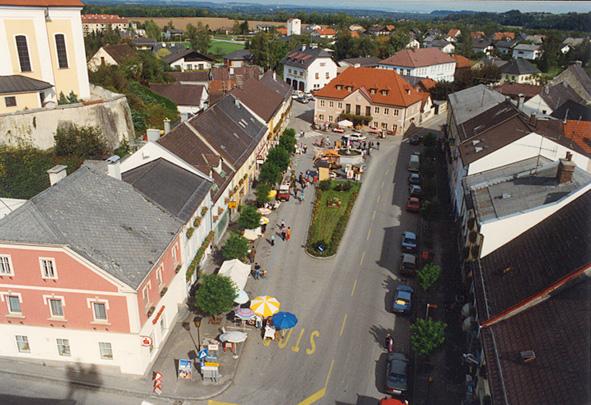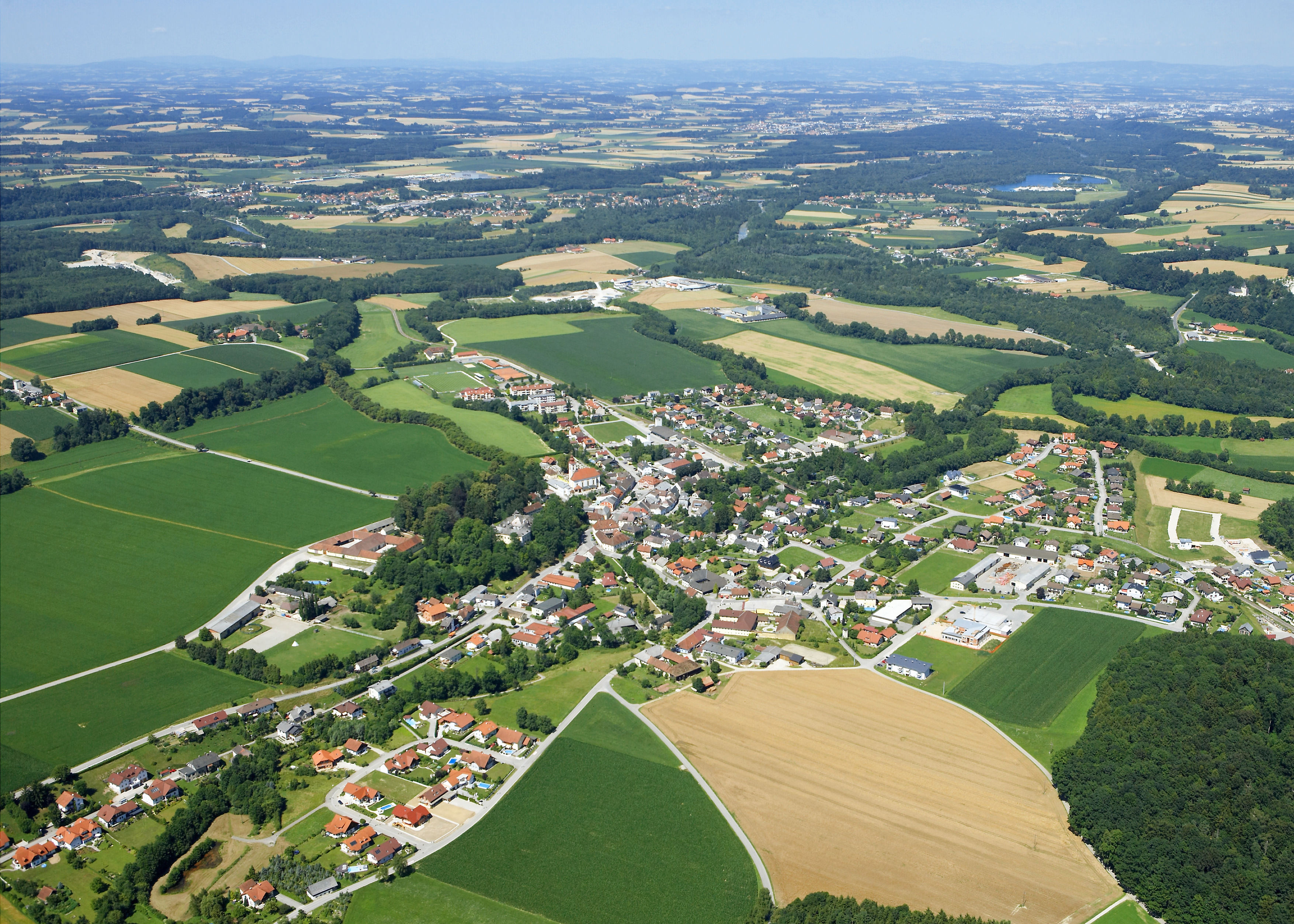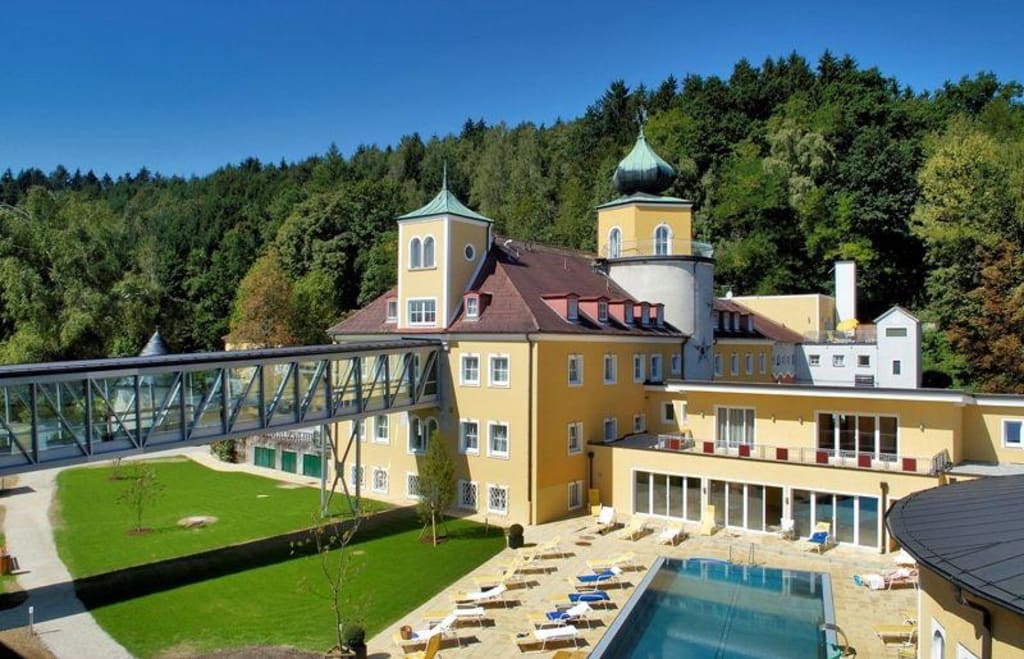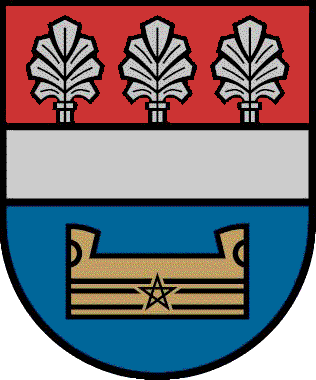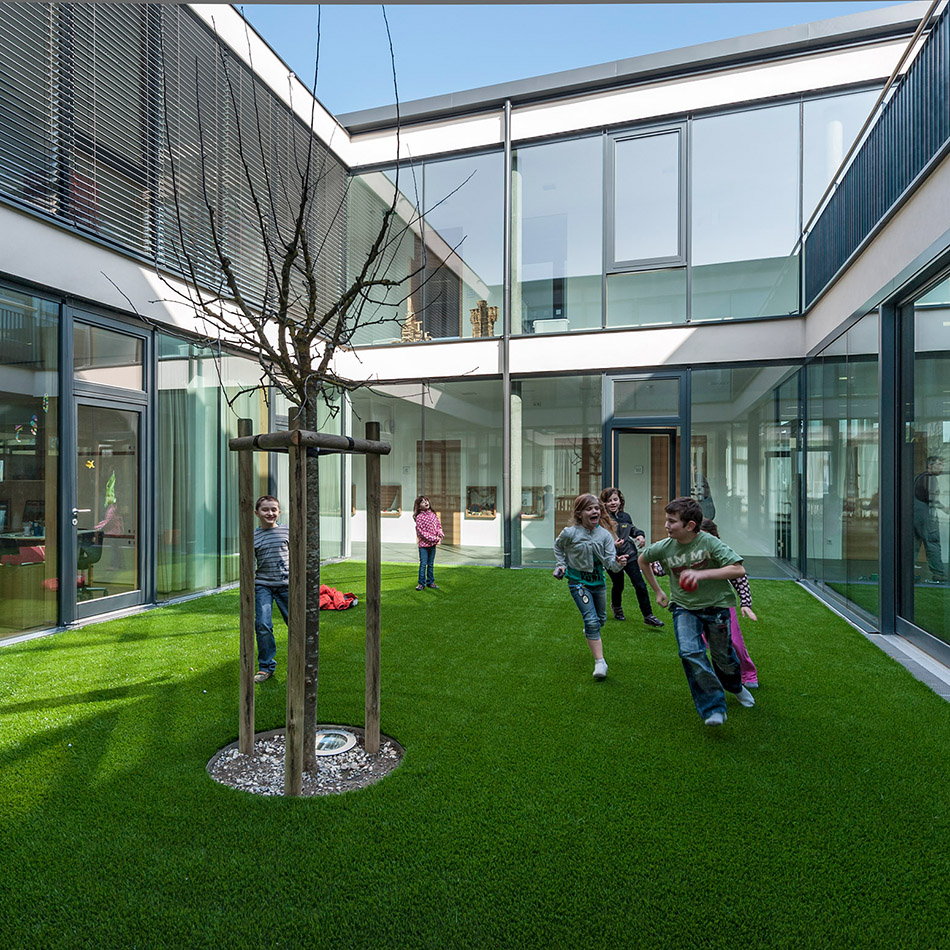Bad Wimsbach-Neydharting
Bad Wimsbach -Neydharting is a market town and health resort in Upper Austria in the district of Wels-Land with 2420 inhabitants (as of 1 January 2013).
- 4.1 churches
- 4.2 Miscellaneous
Geography
Bad Wimsbach -Neydharting is located at 387 m altitude in Hausruckviertel or Traun quarter. The village belonged until 2012 to the judicial district of Lambach and since 1 January 2013 part of the judicial district of Wels.
The expansion is 5.5 kilometers from north to south, from west to east 7.9 km. The total area is 24.3 km ². 18.5% of the area is forested, 71.2 % of the area is used for agriculture.
The competent jurisdiction is Lambach.
Districts
Quarters are: Aigen, Au, Bachloh, Bergham, Dorfham, Ellnkam, Giering, Hague, Haidermoos, Kößlwang, Neydharting, Traun, Aichet, Fraham, Fürholz, Hueb, Penning, Rath, Wim, Wimsbach market.
Neighboring communities
Coat of arms
Official description of the municipality coat of arms:
The municipality colors are blue, white and red.
The two parts of 1982 conferred emblem convey through their images in both the 1954 fixed double name as well as the past and present of the market town. Beams and plumes are the ( older ) Coat of arms of Aspan Liechtenhaag taken with the childless death of Hanns Joachim Aspan were from 1446 to invalidate the male line in 1645 owned by the rule Wimsbach. The bath Schaff refers to the cure in the mud bath Neydharting; that in a train drawn, five star shaped pentagram is an ancient, magical, evil repelling sign of salvation, even at the Pythagoreans Allegory of bodily and mental harmony and, assuming also a symbol of health.
History
Originally in the eastern part of the Duchy of Bavaria lying, was the place since the 12th century the Duchy of Austria. Since 1490 he is the Principality ' Austria above the Enns ' attributed. During the Napoleonic Wars, the place was occupied several times. Since 1918, the town belongs to the province of Upper Austria. After the annexation of Austria to the German Reich on 13 March 1938, the town belonged to the " Upper Danube ". After 1945 the restoration of Upper Austria.
In 1954 was made by council decision to rename the market town Wimsbach in Bad Wimsbach -Neydharting. The name change should emphasize the spa with the spa and mud bath.
Culture and sights
Churches
- Church of St. Stephan: The Baroque parish church was built in the years 1688-1691 using parts of the Gothic Church of Carlo Antonio Carlone predecessor. The high altar of 1692 comes from the workshop of the sculptor Johann Matthias Högenwald Passau. The Way of the Cross from the workshop of painter Wolfgang Welser Andreas Heindl (1693-1757) is unusually designed counterclockwise.
- Branch Church of St. Thomas of Canterbury in the Wim
- Filial church of St. George in Kößlwang ( Gothic) with valuable Georg statue
Others
- Market Square and town center with town houses
- Water- power driven Hackenschmiede ( one of the oldest fully functional hack forging of Europe)
- Peat Neydharting ( Art Nouveau ) in the resort area open air museum, Jungschützen memorial Neydharting Moor ( nature reserve)
- Nature reserve Almauen
- Villa Rustica ( Roman archaeological site )
- Castle Neydharting
- Wimsbach Castle and Castle Park
- 300 meters long avenue of chestnut trees ( unique )
- Views of Kösslwang, Bachloh and Wim ( here you can see the entire Upper Austrian Alps )
- 80 Sacred small monuments (chapels, shrines, ...)
Population Development
In 1991 the municipality had 2,300 inhabitants according to the census, in 2001 then 2360 inhabitants.
Sports
In 1933 the sports club Wimsbach was founded and is divided into seven sections. Football ( 1933), ski (1970 ), Gymnastics (1970), cudgels (1972 ), tennis ( 1979), Protect (1982 ) and curling (1983).

